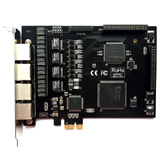

| Index |
|||||||||||
| What is a PBX? A PBX is an acronym for a Private Branch eXchange, which provides for the internal telephone system. Telephone exchanges were initially under the control of the telephone providers, such as AT&T in the US or British Telecom in the UK. These companies handled all line provisioning and call routing between the businesses and the public. Initially, the routing of calls was done by a team of operators (usually female) sitting in the offices of the telephone companies and routing calls by plugging and unplugging cables to connect one caller to another. Eventually, as the reliance and the demands of this service grew, technology evolved to the point where we had automatic systems managing these calls. As the modern telephone networks began to take shape, private companies saw a greater reliance on telephone communication. Many decided to implement their own services so that they could handle calls internal to the organization. Usually, the equipment was leased or bought from the telephone companies mentioned previously, so they were quite happy to help with these services. These companies also got to charge for the lines and calls connecting the company externally, and so they could profit from this too. As we saw in the previous section, the more expensive digital lines were now being used only as a means of communicating outside the building, rather than using externally provided lines for all communication. At this point, it became obvious that there was a need for these companies to install their own telephone equipment to route internal calls and, in some cases, to make sure calls going out or coming into the company went via the correct routes. For example, you don't want Alice in accounting calling Bob in HR through a line that leaves the company and crosses continents if they sit within the same building. Therefore, there is a requirement for a PBX to effectively manage calls and ensure that they go via the most cost effective and reliable routes in order to keep the company communicating internally between departments and employees, and externally with customers and suppliers. In its basic form, a PBX is the interface between the public telephone network and the private network within the company. Since most companies need fewer phones lines than the number of employees they have, they can get away by having a few outgoing lines but many internal extensions so that employees can converse internally. This costs little more than the maintenance of the PBX and internal cabling, and there are no line rentals or other call charges being paid to the telecommunications provider. The PBX then handles all of the routing in and out of the company using the lines effectively. The PBX also handles calls within the company so that a call from one internal phone to another does not have to go out onto the phone circuits and back in. As PBXs became more common, businesses and their employees required more features and functionality such as voicemail, call parking, call transfers, music on-hold, IVR menus, least-cost routing, and an Automatic Call Distributor (ACD) in order to provide for calling groups. With the increase in demand for communications in all aspects of a business, the features required in a phone system become more complex and more expensive. If modern companies had to rely on the telecommunications provider for all these features, the cost of communication could become prohibitively high.
-ISDN BRI and ISDN PRI Services |




